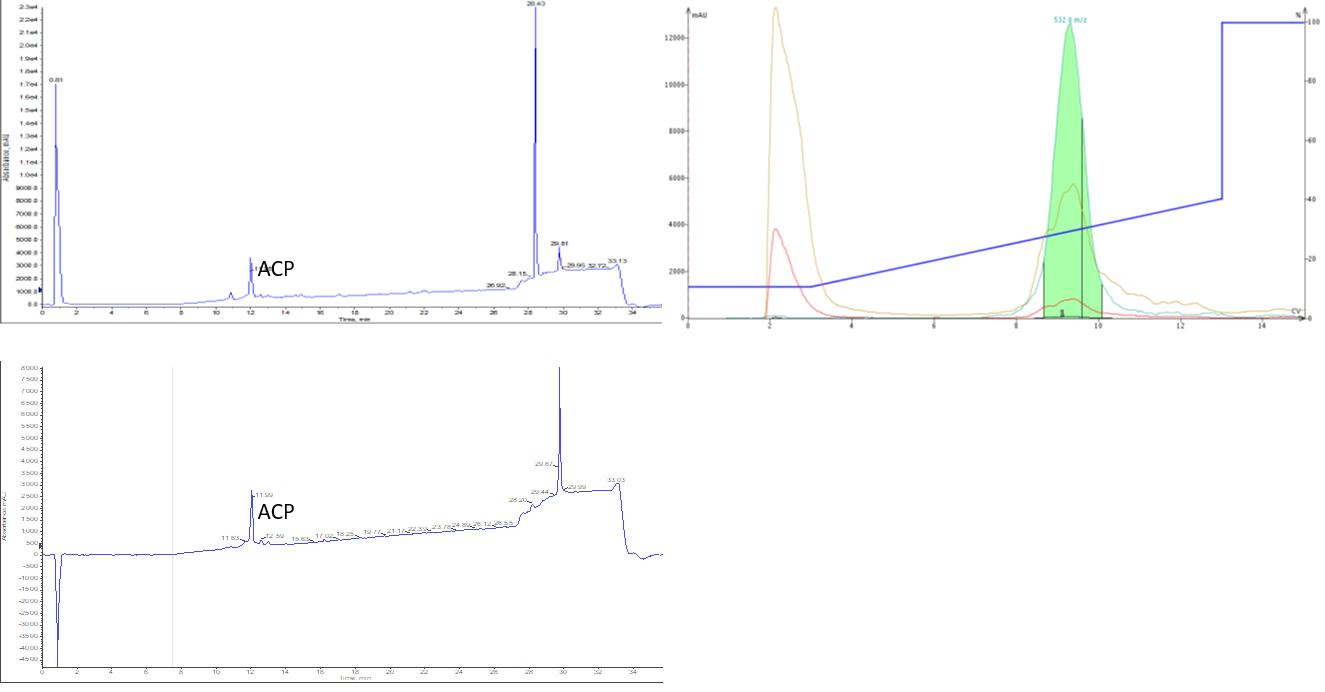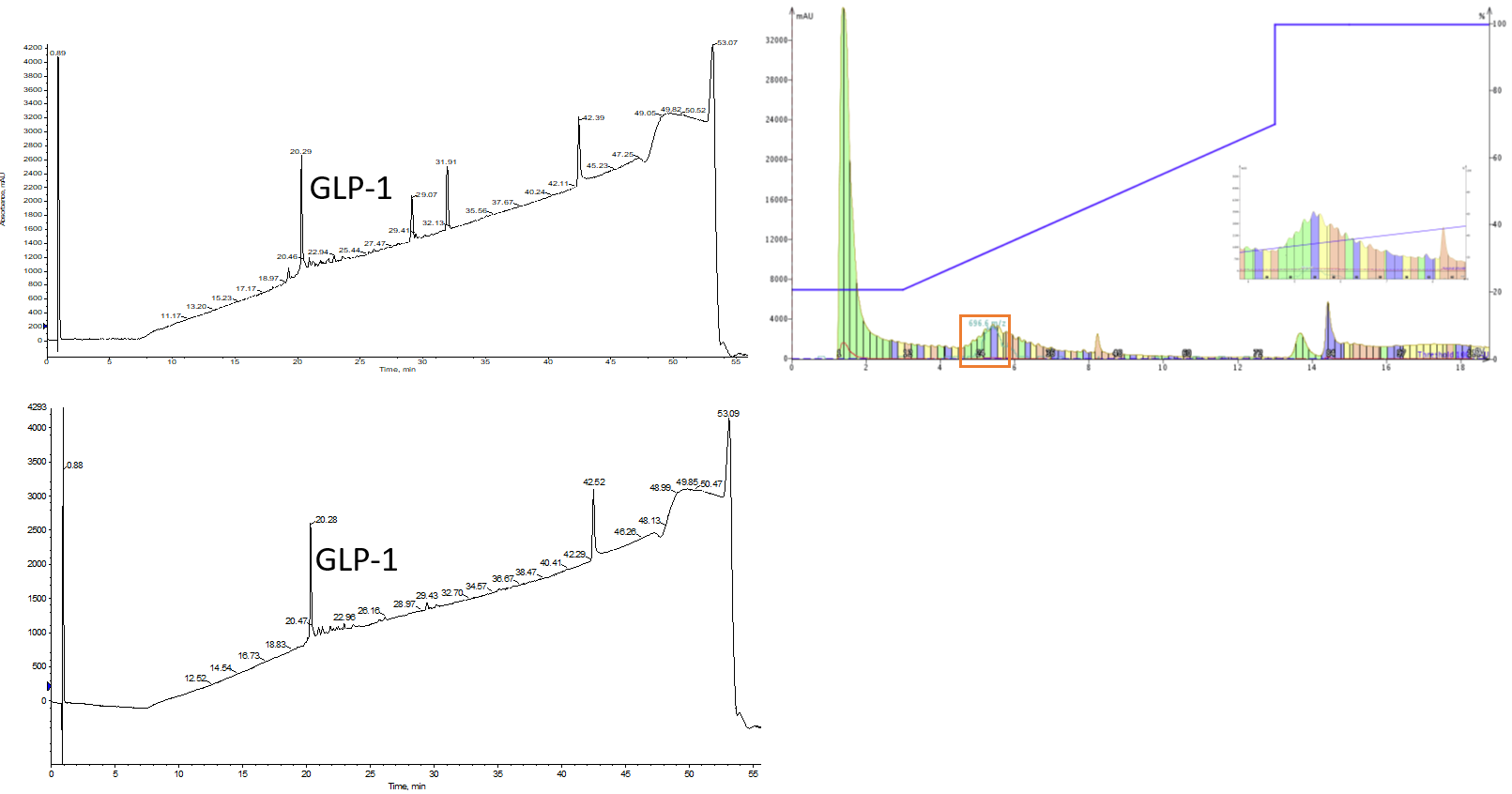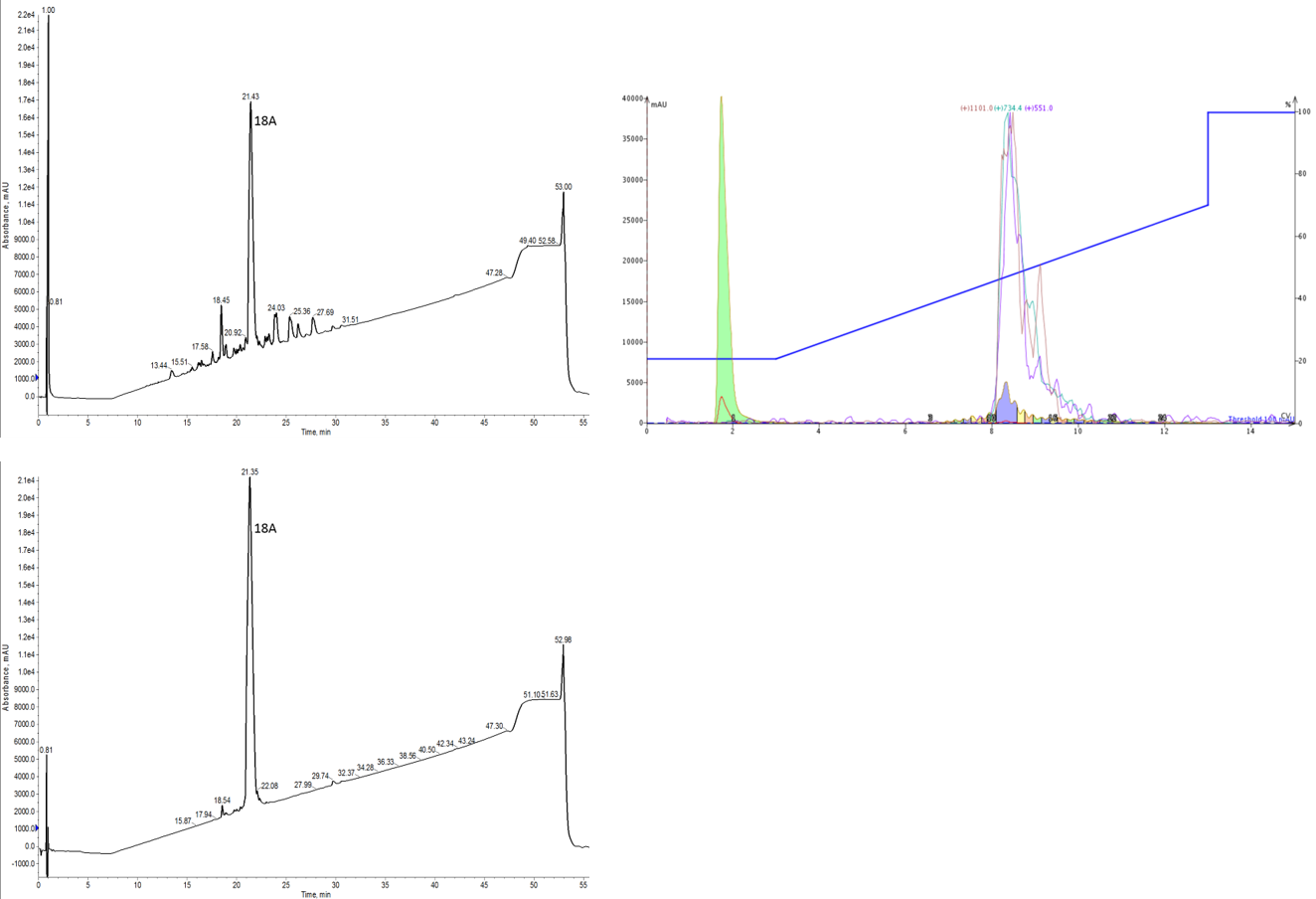Would you ever consider an alternative to reversed- phase HPLC to purify your synthetic peptides? It seems like a silly question, right. And like many of you, I literally laughed at my Product Manager when he asked me this same question in my first days at Biotage.
Fast forward a few years and my answer to that question is now very different. For those of you that have followed this blog, you’ll know that I have switched to reversed-phase flash chromatography almost exclusively for my peptide purification. In today’s post, I’ll highlight some of the critical reasons that have influenced my change in mindset.
During my time in graduate school and after, I developed a close relationship with my favorite HPLC (or two). I learned all their quirks and the tricks to get the purest peptides possible. More often than not though, it required spending my whole weekend in front of that machine. Even as the level of technology improved, I still checked in on it in the middle of my Saturday afternoon – emptying waste containers, topping off mobile phase solvents, so on and so forth. But what if that isn’t necessary?
There’s always questions and concerns when introducing a new technique to a group of scientists, and this is no different. The questions that immediately popped into my head when I first considered using flash chromatography as an alternative to HPLC were, among others:
- -How different is this really going to be from what I already know?
- -Can I still get peptides >95% pure?
- -How much peptide is going to get stuck on this column?
Flash chromatography is definitely different than standard semi or preparative HPLC. The stationary phase particle size is larger, causing a compromise in the high resolution that peptide chemists have become accustomed to. However, with larger particles, you significantly increase the sample loading capacity. This can be put to use in two different types of purifications.
One type of purification is that for crude peptides cleaved from the resin with relatively high purity. In this case, the high loading capacity is ideal to reduce not only the total purification time required, but also wear and tear on the much more expensive HPLC columns, Figure 1.

Figure 1. Taking advantage of the high loading capacity. Crude ACP (65-75) synthesized with 31% crude purity, including residual side chain protecting groups (top left), was purified using a 10 g SNAP Bio C18 cartridge in a single 300 mg injection (top right) to a final purity >90% (bottom). This quantity of crude peptide represents a 3% sample load relative to total stationary phase content.
The other type of purification is cleaning up dirty crude peptides followed by final HPLC polishing. Although it sounds worse, (who really wants to do purification twice??), the total time required for purification could actually be less. Using flash, you can load the entire synthesis for a single purification effort and improve the final purity while significantly enriching the sample in your desired peptide. Then when it is time for final HPLC polishing, the number of injections can be reduced significantly, Figure 2.

Figure 2. Crude clean up reduces HPLC polishing time. Crude GLP-1, a 37 amino acid peptide was synthesized with 27% crude purity (top left). A 150 mg sample was purified using a 25 g SNAP Bio C18 cartridge (top right) and combining fractions (orange box) yielded a sample with 87% final purity (bottom).
So how do these two strategies really compare? First and foremost – YES! You can absolutely achieve >95% purity in a single injection using a flash cartridge and without significant changes to the norm, Figure 3. There are also cases where some outside the box thinking maybe necessary as well, but hey, that’s peptides for you.

Figure 3. Purification of crude 18A, an 18 amino acid amphipathic peptide. The crude 18A sample was synthesized with ~69% crude purity (top left), was purified using SNAP Bio C18 (top right) to a final purity >95% (bottom).
I’ve been working to develop flash strategies that will enable purification and achieve highly pure peptides with high sample loads with the goal to eliminate the need for prep HPLC. What was missing though is a true side by side comparison purification using flash or prep HPLC, Table 1.
| High Pressure Liquid Chromatography (HPLC) | High Performance Flash Chromatography (HPFC) | Percent Difference | |
|---|---|---|---|
| Column Type | Phenomenex Gemini 5 um NX-C18 110A, 100 x 21.2 mm | Biotage SNAP Bio C18, 25 g | |
| Crude Loading (mg) | 150 | 150 | |
| Number of Injections | 4 | 1 | |
| Total peptide recovered (mg) | 33 | 30 | |
| Total Solvent A Consumed (mL) | 1777 | 1041 | 41.5% water savings |
| Total Solvent B Consumed (mL) | 1514 | 477 | 69.5% MeCN savings |
| Total Time for Purification | 160 min (4 x 40 min) | 27 min | 83% time savings |
Equal quantities of peptide synthesized in the same batch, so there are no inconsistencies due to differing crude samples to be worried about were purified using flash chromatography or prep HPLC. The flash-mediated purification not only required less time and consumed less solvent, but achieved similar purity and similar sample recovery to the prep HPLC system, Figure 4.

Figure 4. Analytical HPLC for peptides either using HPFC (high performance flash chromatography; left) or HPLC (right) as the purification strategy.
Would you be willing to try out a new technique to reduce your purification time? Follow the link below to visualize time savings enabled by flash chromatography for your peptide purification.

 Organic Workflow
Organic Workflow Peptide Workflow
Peptide Workflow Scale-Up Flash Purification
Scale-Up Flash Purification  Sample Preparation
Sample Preparation Biomolecule Purification
Biomolecule Purification Oligo synthesis
Oligo synthesis Scavengers and Reagents
Scavengers and Reagents Service & Support
Service & Support Accessories & Spare parts
Accessories & Spare parts Investors
Investors Reports & News
Reports & News The Share
The Share Corporate Governance
Corporate Governance Calendar
Calendar Sustainability
Sustainability Our Offering
Our Offering Our History
Our History Our Locations
Our Locations Leadership
Leadership